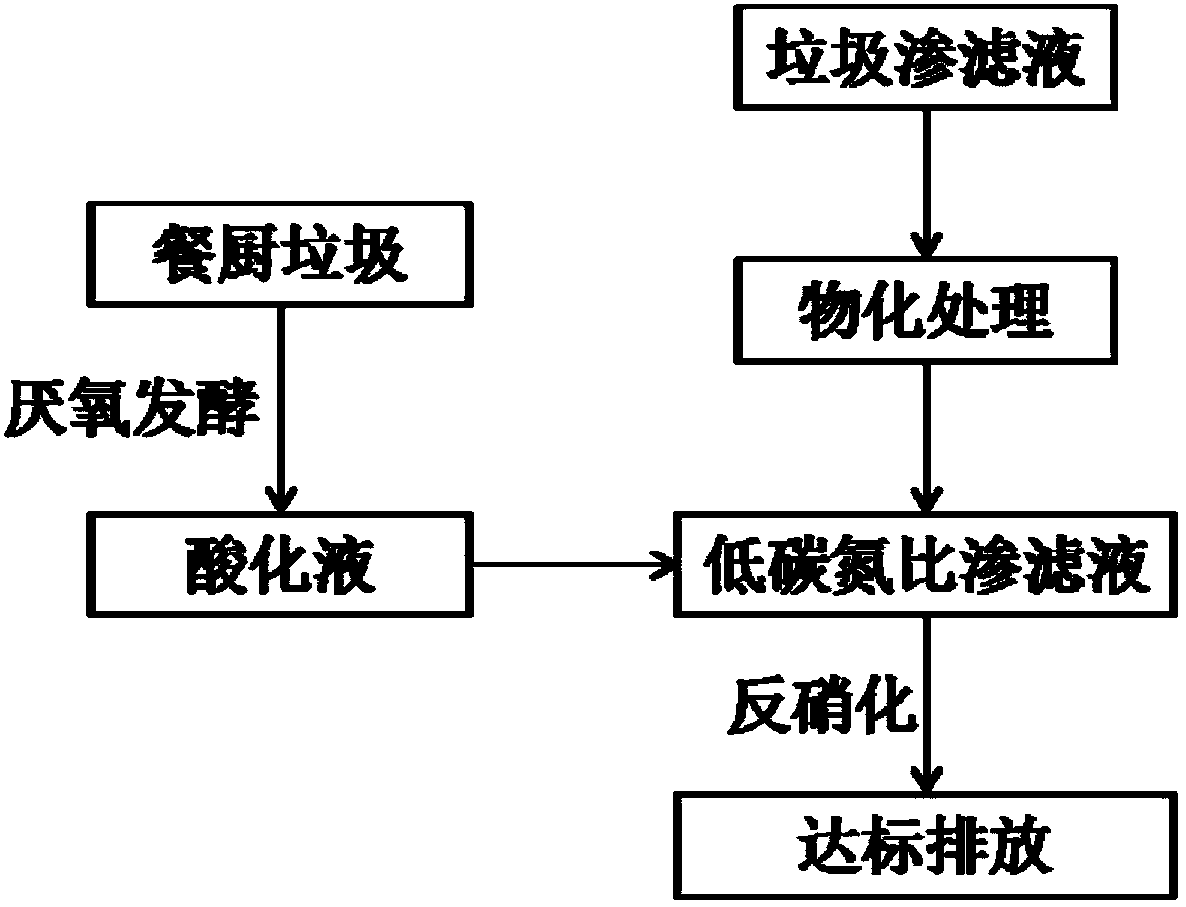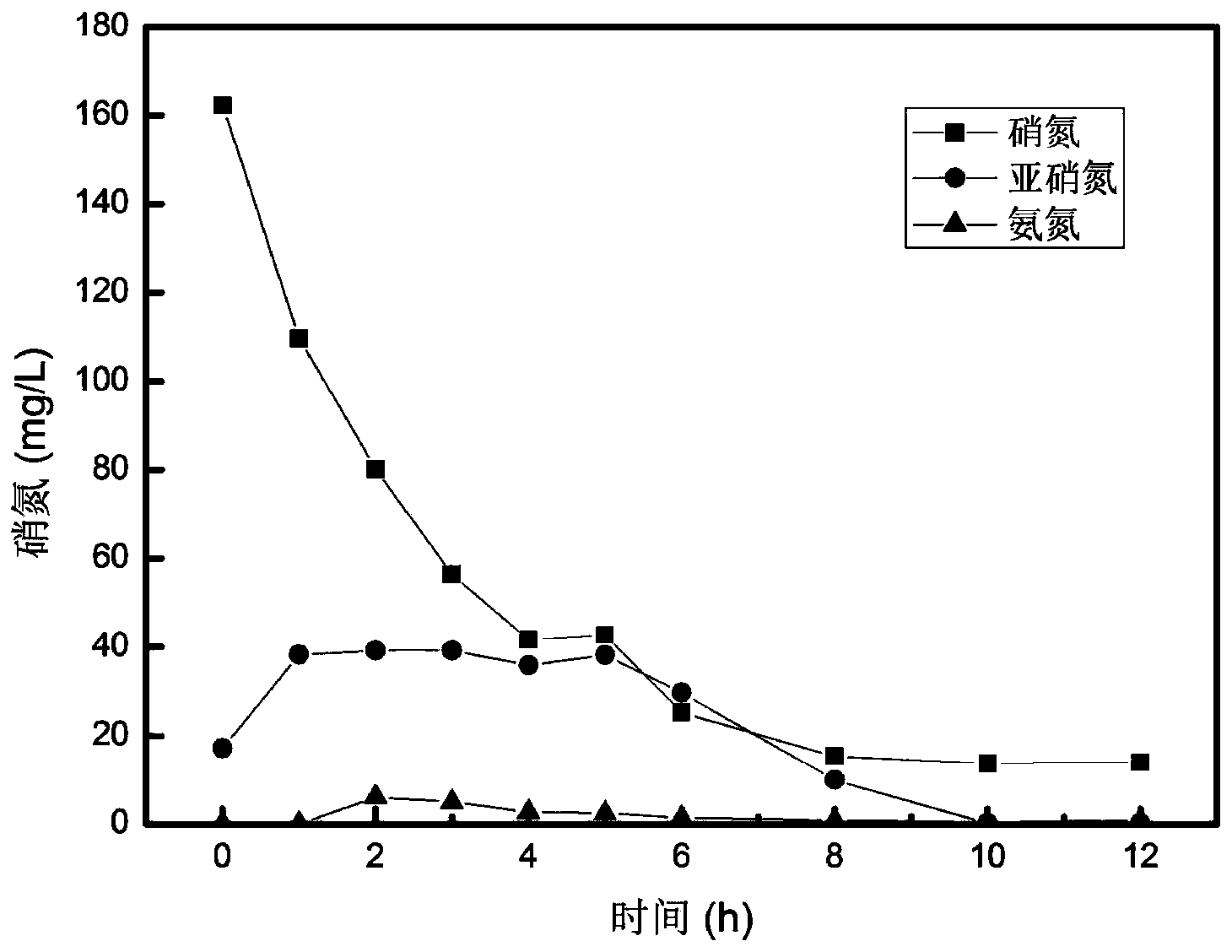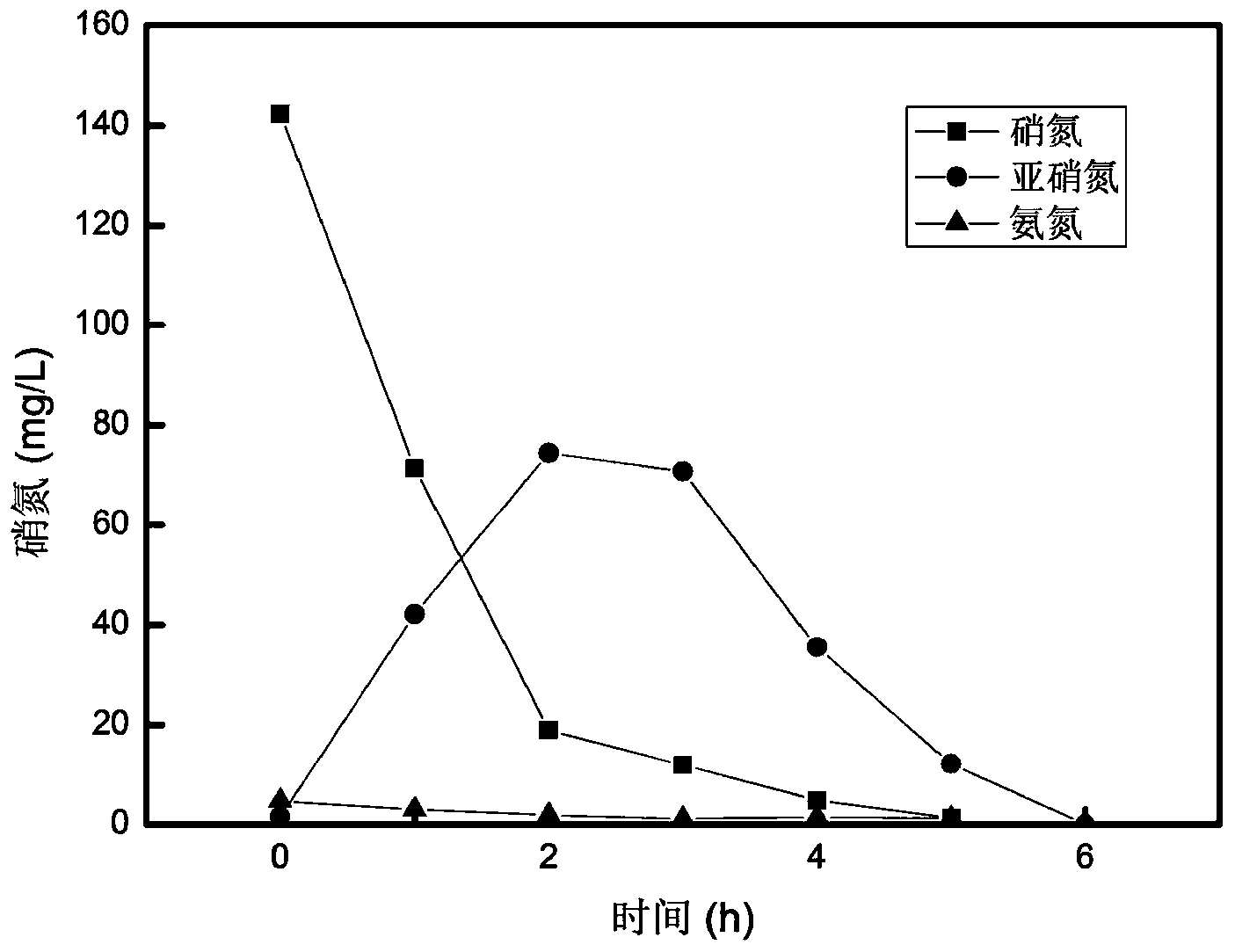Method for deep biological denitrification and removal of COD of leachate
A biological denitrification and leachate technology, applied in the field of deep biological denitrification and COD removal of leachate, can solve the problems of inability to guarantee water output and low price
- Summary
- Abstract
- Description
- Claims
- Application Information
AI Technical Summary
Problems solved by technology
Method used
Image
Examples
Embodiment 1
[0027] After the pre-treatment, the total nitrogen concentration of the leachate is about 160mg / L, most of which are nitrates, and the COD concentration is low. In an SBR reactor with an effective volume of 3L, 35ml of the hydrolysis and acidification liquid with a COD concentration of 80g / L of kitchen waste was added, and the ratio of COD to total nitrogen was 5.8. After 12 hours of treatment, the total nitrogen concentration was below 15 mg / L, and ammonia nitrogen and nitros nitrogen were not detected. The COD effluent is 79.2mg / L.
Embodiment 2
[0029] After pre-treatment, the total nitrogen concentration of the leachate is about 145mg / L, most of which are nitrates, and the COD concentration is low. In the SBR reactor with an effective volume of 3L, 28ml of the hydrolysis and acidification liquid with a COD concentration of 80g / L of kitchen waste was added, and the ratio of COD to total nitrogen was 5.1. After 6 hours of treatment, the total nitrogen concentration was below 5 mg / L, and ammonia nitrogen and nitros nitrogen were not detected.
Embodiment 3
[0031] After the pre-treatment, the total nitrogen concentration of the leachate is 145mg / L, most of which are nitrates, and the COD concentration is low. Add 38ml of hydrolysis and acidification liquid with a COD concentration of 80g / L to the SBR reactor with an effective volume of 3L, and the ratio of COD to total nitrogen is 7. After 12 hours of treatment, the total nitrogen concentration is below 15 mg / L.
PUM
 Login to View More
Login to View More Abstract
Description
Claims
Application Information
 Login to View More
Login to View More - R&D
- Intellectual Property
- Life Sciences
- Materials
- Tech Scout
- Unparalleled Data Quality
- Higher Quality Content
- 60% Fewer Hallucinations
Browse by: Latest US Patents, China's latest patents, Technical Efficacy Thesaurus, Application Domain, Technology Topic, Popular Technical Reports.
© 2025 PatSnap. All rights reserved.Legal|Privacy policy|Modern Slavery Act Transparency Statement|Sitemap|About US| Contact US: help@patsnap.com



